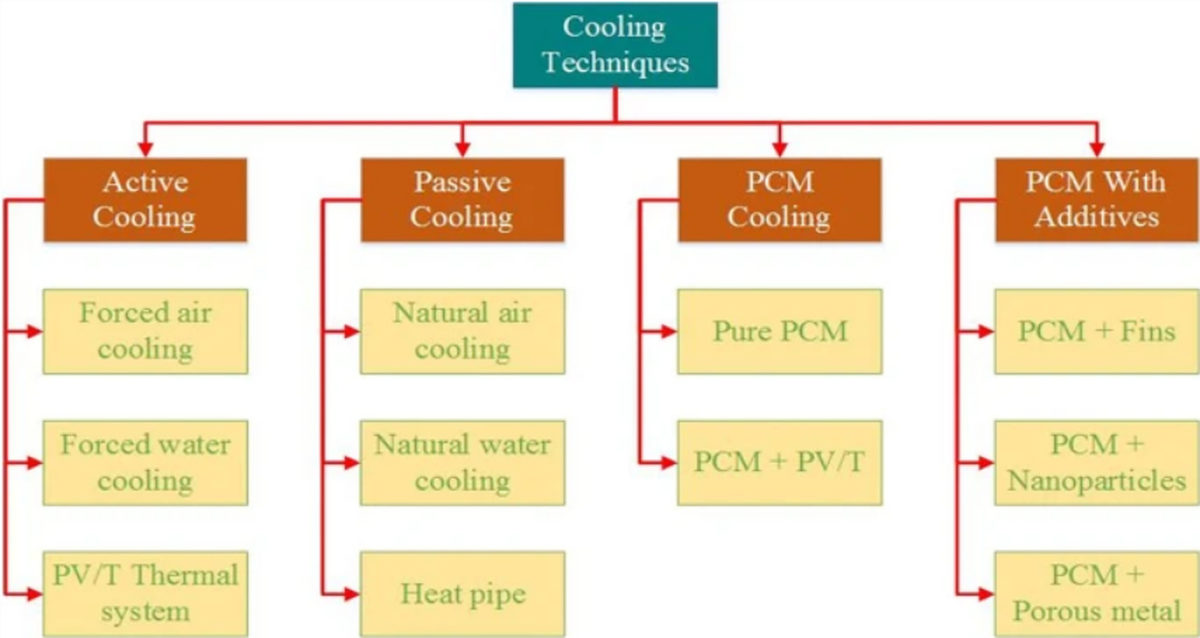Researchers from Benha University in Egypt have reviewed and analyzed all cooling techniques developed to date at research level to reduce the operating temperatures of solar panels.
Their analysis included passive and active cooling methods, cooling with PCMs, and cooling with PCM and other additives, such as nanoparticles or porous metal.
“Many studies made a general review of the methods of cooling PV solar cells, especially the first three methods,” the scientists said. “Therefore, the current research is characterized by dealing with different cooling techniques, focusing on the fourth method, and summarizing all the researches that dealt with cooling PV solar cells with PCM and porous metal.”
For the active cooling category, the researchers analyzed forced air cooling and forced water cooling, as well as techniques that use the water circulating in photovoltaic-thermal panels to cool down the temperature of the PV module. The scientists said these methods are the most expensive but most effective in reducing PV module temperatures. They said active cooling ensures that uniform temperature distribution is achieved by improved heat exchanger designs.
“The active cooling technique is considered an effective way to improve the photovoltaic performance, but it depends on an external power source, so the external power is deducted from the power produced from the PV cells, reducing the net output power produced from the PV cells,” they said.
They described the passive technologies as less expensive than their active counterparts. They said they could only lower module temperatures by a “small percentage.” These methods include natural air cooling, natural water cooling, and heat pipes.
“Immersion cooling, heat pipes, natural air cooling with fins, heat sinks, and improved heat exchanger designs were found to yield uniform temperature in most of the PV installations. Heat pipe cooling with its high heat flux dissipation capability was shown to be effective for PV cooling,” the research group said.
The scientists said that PCMs are effective at absorbing excess solar panel heat that is not converted into electrical energy.
“Latent heat of PCM helps in lowering panel temperature, bringing it closer to 25 C and maintaining it almost constant during peak sunny hours,” they said, adding that the efficiency of the system is higher in summer than in winter.
The Egyptian group said that, despite several promising features, advanced experiments with PCMs with additives are still needed to evaluate the feasibility of organic and combined PCMs in PV cooling. Porous metal was found to be less expensive than nanoparticles.
They explained their findings in “Review of cooling techniques used to enhance the efficiency of photovoltaic power systems,” which was recently published in Environmental Science and Pollution Research.
This content is protected by copyright and may not be reused. If you want to cooperate with us and would like to reuse some of our content, please contact: editors@pv-magazine.com.




By submitting this form you agree to pv magazine using your data for the purposes of publishing your comment.
Your personal data will only be disclosed or otherwise transmitted to third parties for the purposes of spam filtering or if this is necessary for technical maintenance of the website. Any other transfer to third parties will not take place unless this is justified on the basis of applicable data protection regulations or if pv magazine is legally obliged to do so.
You may revoke this consent at any time with effect for the future, in which case your personal data will be deleted immediately. Otherwise, your data will be deleted if pv magazine has processed your request or the purpose of data storage is fulfilled.
Further information on data privacy can be found in our Data Protection Policy.